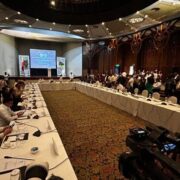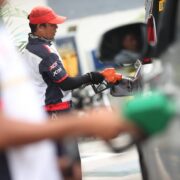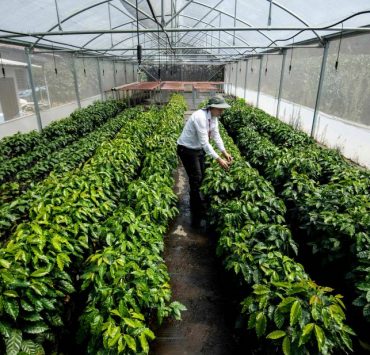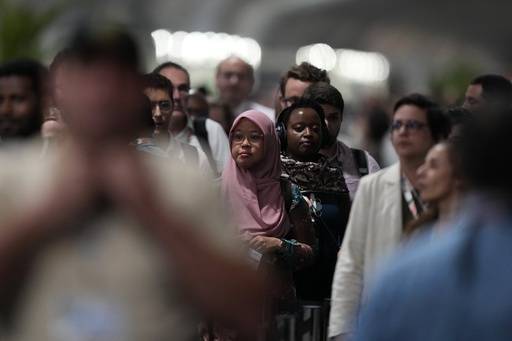Urgently needed: Ambitious, effective UN plastics treaty
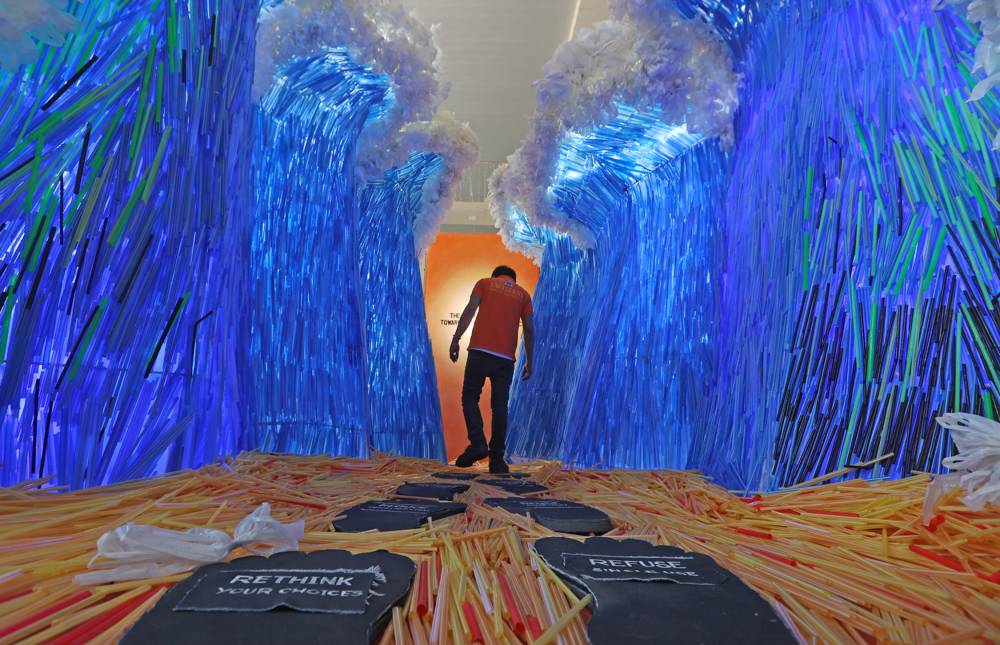
About 170 countries have been in intense negotiations since 2022 on a Global Plastics Treaty to end plastic pollution. Our children’s lives may depend on it.
As we celebrate Earth Day with the theme, “Planet vs Plastics,” it is important to note that it is in our country’s interest to fight for a strong and ambitious treaty. We have been eating, drinking and breathing plastics so much so that we now have plastics in our bodies and are exposed to many of the 16,000 plus chemicals found in and leaking out of plastics, including thousands of chemicals known to be toxic.For several years my colleagues at Silliman University and Negros Oriental State University, along with researchers at other Philippine institutions, have been finding microplastics in our fish (danggit, maya-maya, banak, galunggong, matambaka, tilapia and others, including our national fish bangus), in bivalves (talaba, tahong, clams), and even in bottled fish paste (bagoong).
Disturbing studies
Microplastics are tiny pieces of plastics that are smaller than 5 mm. Where did they come from?
When we throw away plastic, the sun, wind, water and other environmental forces break down the plastic into smaller pieces—a process that can take decades. In the end, the microplastics are still plastic which will take decades up to centuries to fully degrade.
Microplastics have also been found in fruits and vegetables, chicken, pork and beef, as well as in salt, honey, beer, soft drinks, tap water, and in the air.
More disturbing are recent studies that have found microplastics inside the eyes, in 77 percent of blood samples, 85 percent of lung tissue, 75 percent of breast milk, 67 percent of placenta including on the fetus side, and in 85 percent of the feces of babies and preschool children. We are now bringing children into this world contaminated with microplastics, so much so that they excrete plastics from their bodies even before they learn to speak.
Columbia University in New York has also found about 216,000 nanoplastics in one liter of bottled water which can penetrate the cells of the body.
The manufacture of plastics has increased from 4 million tons in 1955 to 400 million tons today, which means many more micro- and nanoplastics in decades to come.
In 2019, 33 of my colleagues around the world and I warned about the presence of about 12,000 chemicals in food-grade materials, including the plastics we use to store, heat up, and serve our food and beverages. We know that chemicals migrate out of the plastic into food or drinks. Yet, for reasons that demonstrate the flaws in the global system of food safety, of those chemicals approved for food contact, hundreds have one or more hazard properties (causing cancer, genetic mutations, reproductive disorders, or disruption of our hormonal system) while many more lack data or have not been tested at all.
How have we come to this? For millenniums, humans used what nature gave us—cotton or silk for our clothes, bayong of natural fiber for our bags, banana leaves to wrap our food—and we produced waste that naturally decomposed in weeks or months, returning to the earth and enriching it.
The industrial revolution in the 1800s expanded our use of other materials like metal and glass, which are durable and infinitely recyclable. That is, after being used for years, they can be remelted to create new materials with no loss of quality.

Age of Plastics
In 1907, a chemist combined two toxic industrial chemicals in a heated tube to produce the first synthetic plastic, a material not found in nature. The invention spurred chemical companies to come up with other new plastics. It took World War II to expand the uses of this lightweight, flexible, versatile material that resists rot and withstands many solvents. Thus began the Age of Plastics.
I was a chemist and plastics engineer in the 1970s and 80s, developing new polymers (the resins used to make plastic products), improving plastic manufacturing processes, and working for then the world’s largest producer of engineered plastics in New York.
At that time, we only saw the benefits of plastics and did not think of the consequences of flooding the world with a material that was not infinitely recyclable and would remain for decades to hundreds of years. Of the many plastic resins, only three are recycled at scale, but even those plastics degrade when melted and require the addition of more new plastic when recycled to get the same features. And since plastics come from fossil fuels and the fossil fuel industry has been heavily subsidized (to the tune of $5.9 trillion in 2020), plastics are extremely cheap. The influx of inexpensive plastics into our lives brought about our disposable, throwaway culture.
Take the example of our sari-sari stores. When Spanish colonizers arrived in the 16th century, they found native retailers selling or bartering products in small quantities, known as tingi in Luzon or alig-ig in the Visayas. Families would bring reusable containers of metal, glass or natural materials to be refilled and brought home in bayong. Around the late 1960s, this sustainable practice was displaced by sachets introduced by multinational companies wanting to profit from low-income households. Now sachets from the top plastic polluters in the world are found in a million sari-sari stores, generating 164 million pieces of sachet waste every day. When plastics become waste, they pile up as small mountains in our dumpsites and landfills, deface our streets, parks, our otherwise beautiful beaches and tourist areas. Those that end up in our canals and creeks block the flow of water. When plastic waste gets into our seas, they entangle and entrap marine life, causing lacerations, loss of limbs, and suffocation in hundreds of marine species.
Macroplastics are also eaten by wildlife, such as the young emaciated whale that starved to death in Davao Gulf with 40 kilos of plastics in its stomach. A third of all sea turtles, 40 percent of seabird species, and more than half of all marine mammals, including seals, dolphins and dugong, are affected by eating plastics. This has been called “the global tragedy of our oceans and sea life.”
Little did we realize when we flooded the world with cheap plastics—most of which cannot be recycled, many of which strangle wildlife and later form microparticles to contaminate our food and water, all of which contain myriad chemicals and may take generations to fully decompose—that we would create a nightmare legacy for our children and future generations long after we are dead.
Opportunity of a lifetime
The negotiation for a Global Plastics Treaty is an opportunity of a lifetime. Back in December 2021, I helped draft the “Scientists’ Declaration on the Need for Governance of Plastics Throughout their Lifecycles” which was later signed by over 500 scientists worldwide. Our declaration, presented to the United Nations Environment Assembly on February 2022, along with other statements, convinced some 170 countries to begin negotiations for a treaty to end plastic pollution.
The last negotiations in November 2023 were attended by 143 fossil fuel and chemical industry lobbyists, outnumbering the combined delegations of 70 countries. During the meeting, a few oil-producing countries stalled negotiations by preventing majority votes on substantive issues, pushing instead for consensus. Consensus means that one country could block decisions even when majority of countries agree. So even though 141 countries already regulate or ban specific plastic products nationally, one country can veto any global restriction on problematic plastics.
The next negotiation will take place this April 23-29, 2024, in Ottawa, Canada. Will the negotiations be bogged down by obstructionist tactics and end up being decided by what the least ambitious countries desire for their fossil fuel industries? Or will the negotiations be guided by the urgency and need to address the national and global intergenerational threat of plastic pollution?
The question remains: Will the treaty save our children and future generations from the dangers of plastic pollution, or will the treaty become an instrument of greenwashing, making the public think the problem is solved by promoting ineffective or inadequate actions to delay or distract from urgent and effective solutions? -DR. JORGE EMMANUEL
(Dr. Jorge Emmanuel is trained as a chemist, chemical engineer, environmental scientist, and public health professional. He was chief technical adviser for Global Environmental Facility Projects of the United Nations Development Program in New York, consultant to the World Health Organization in Geneva, president of the Environmental & Engineering Research Group in California, and had worked in the plastic industry. He is a 2016 DOST Balik Scientist and now an adjunct professor at Silliman University, Dumaguete. Dr. Emmanuel was recently invited to join the Philippine delegation to INC-4 as a science adviser.)








